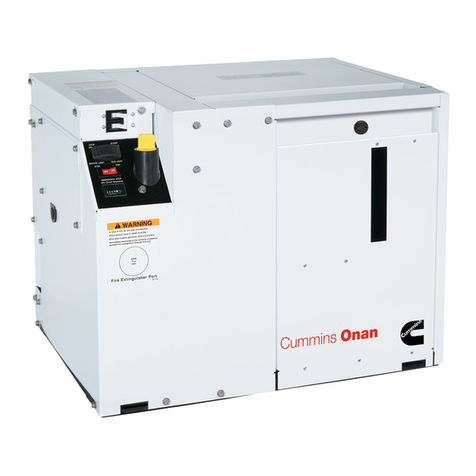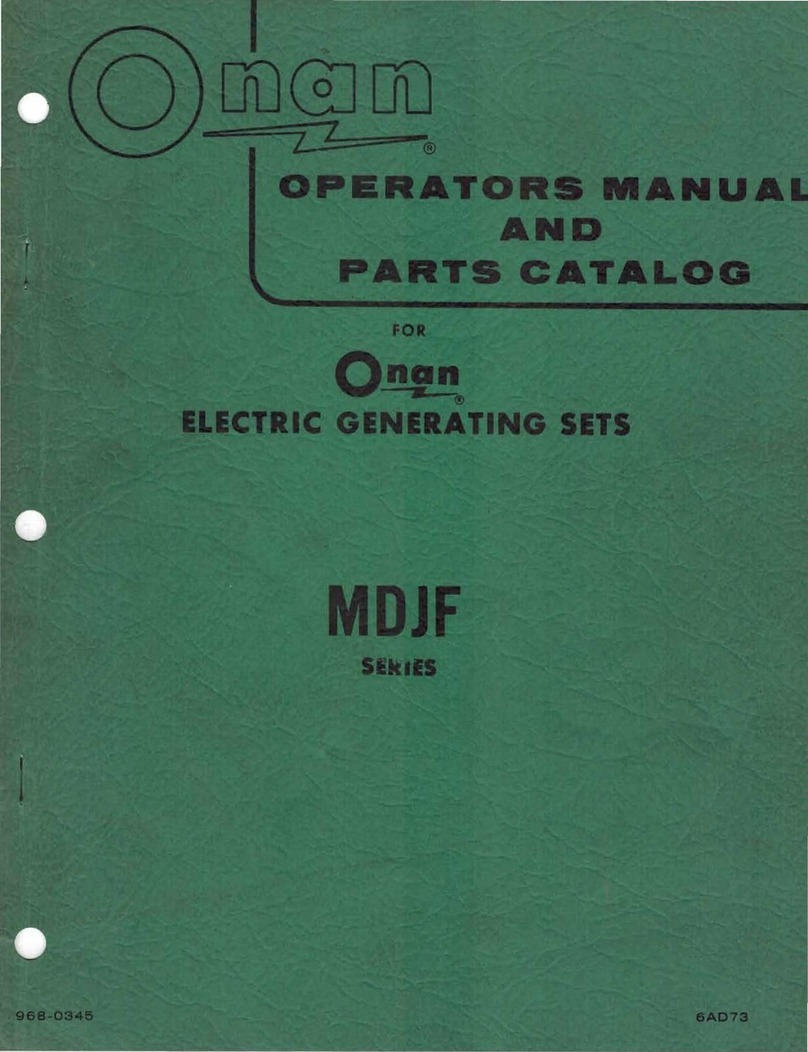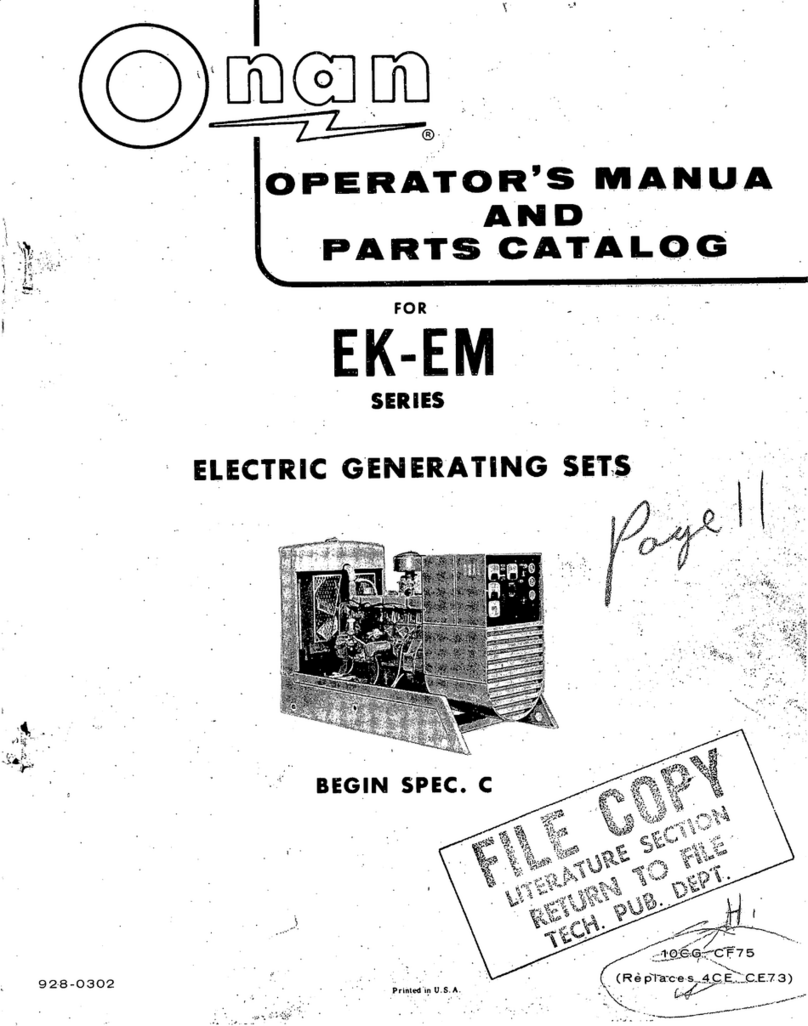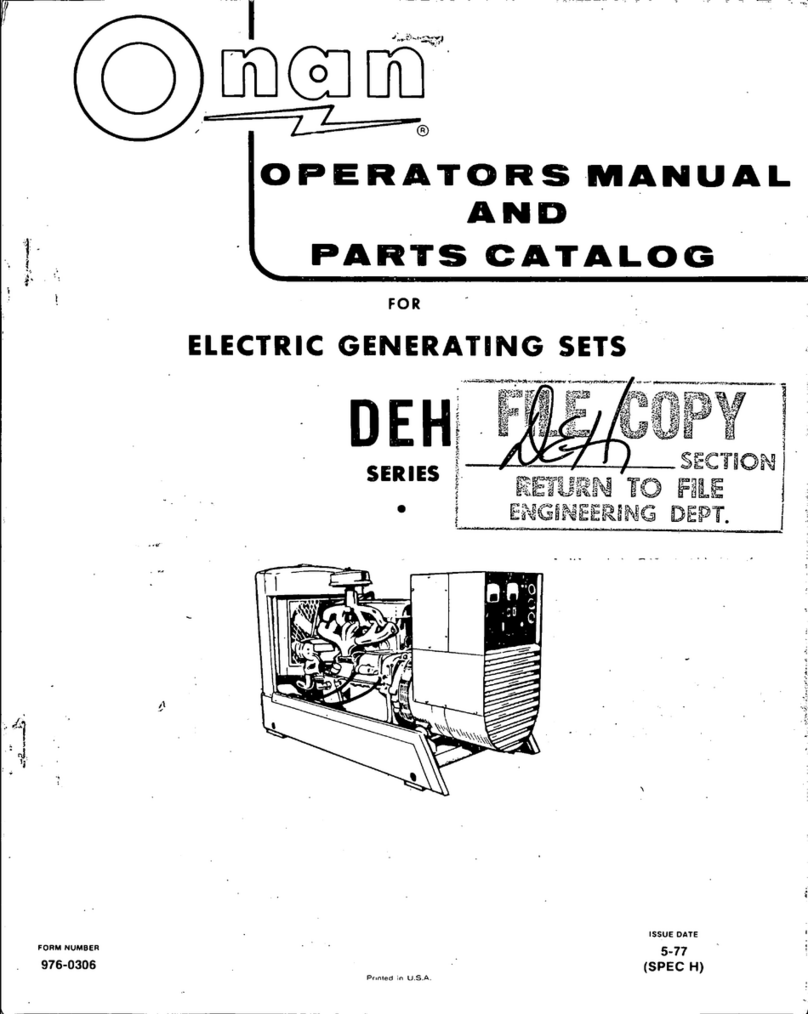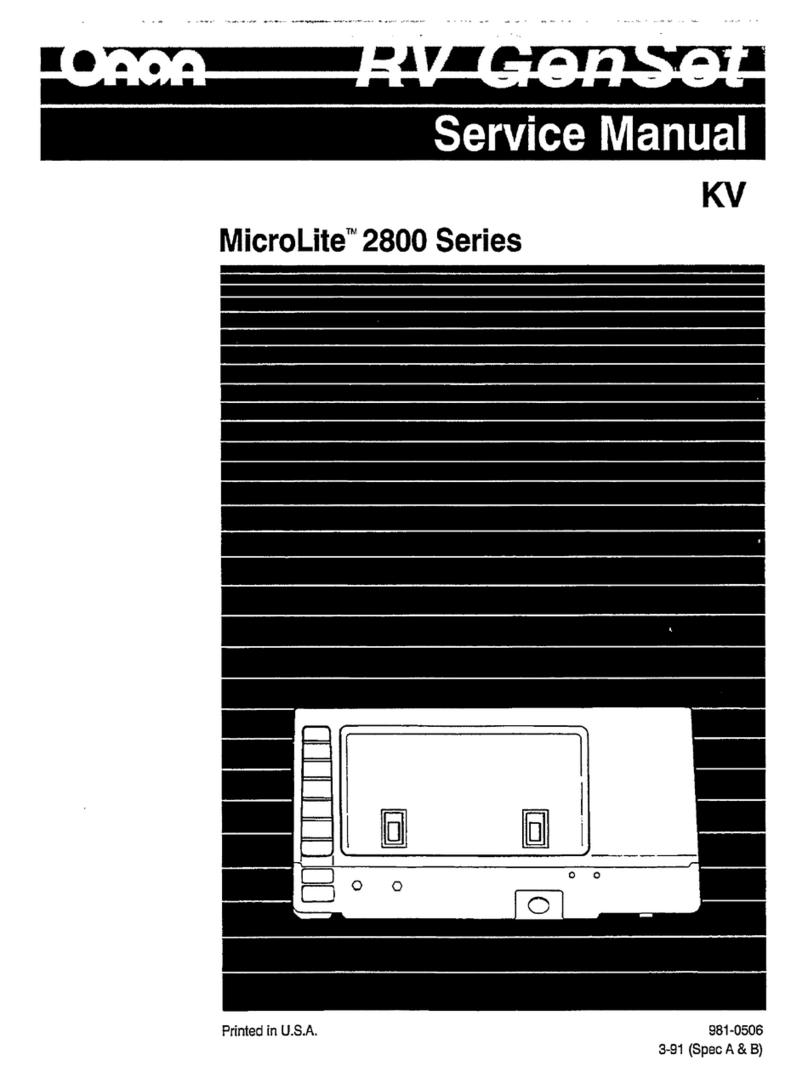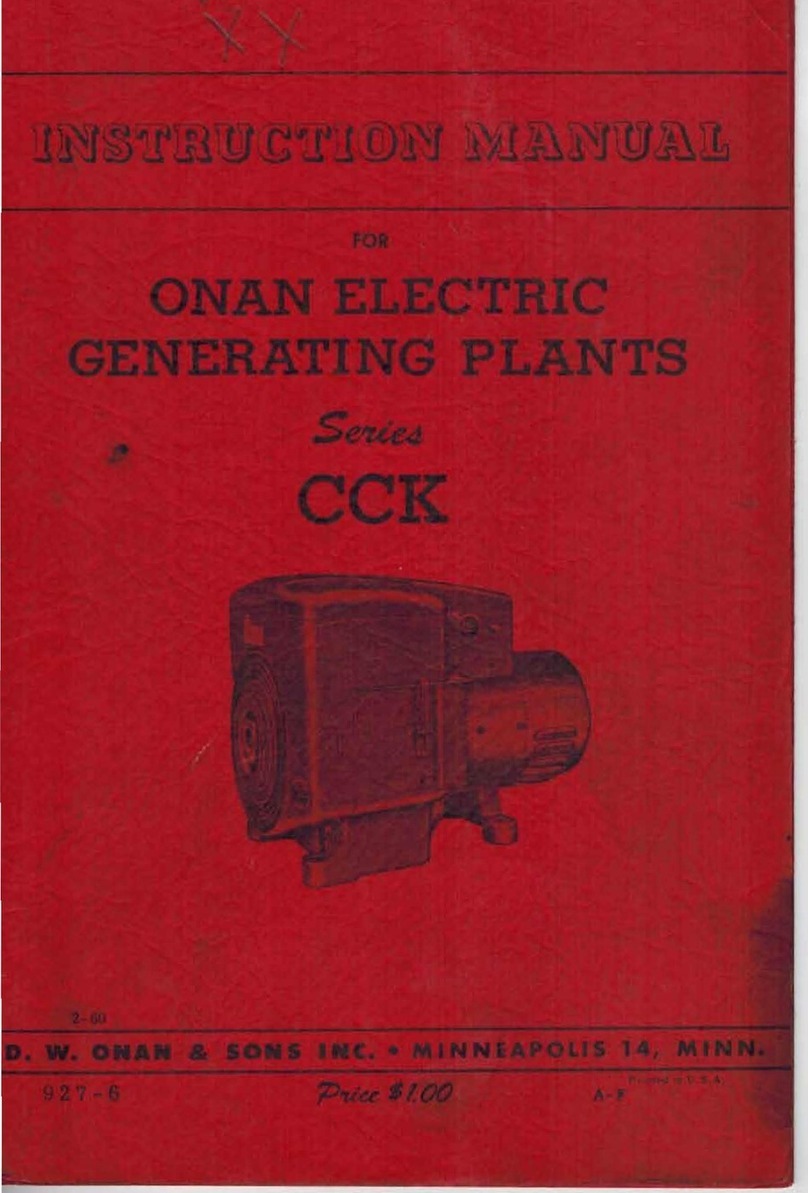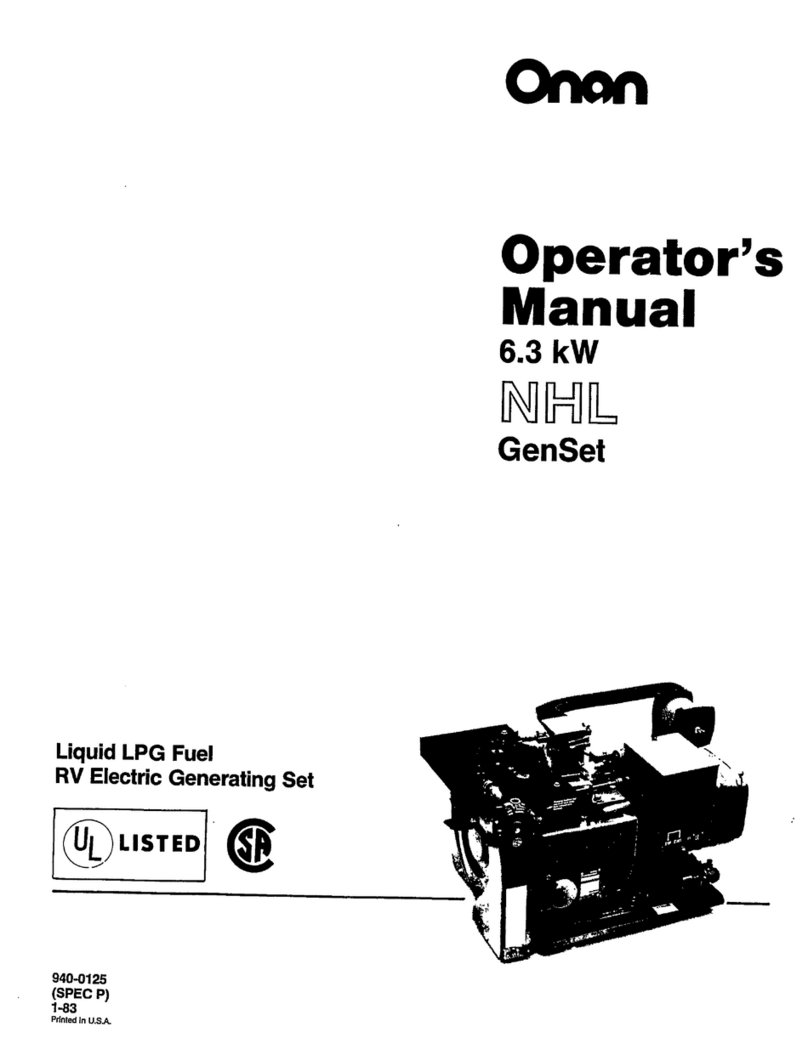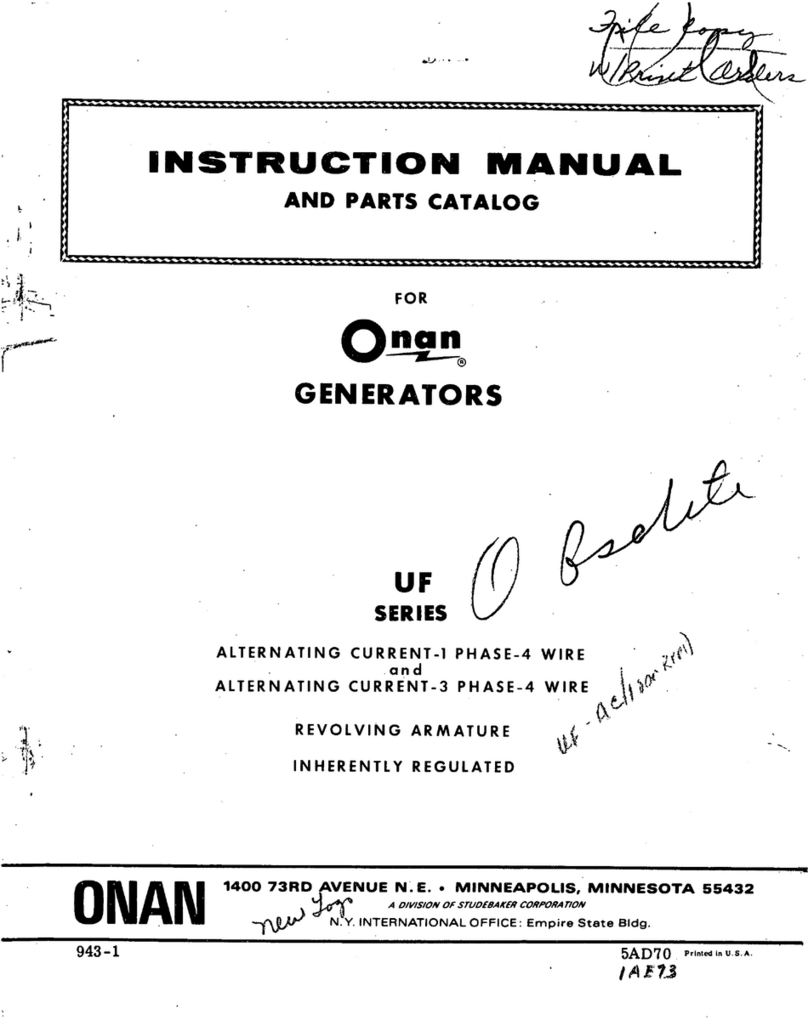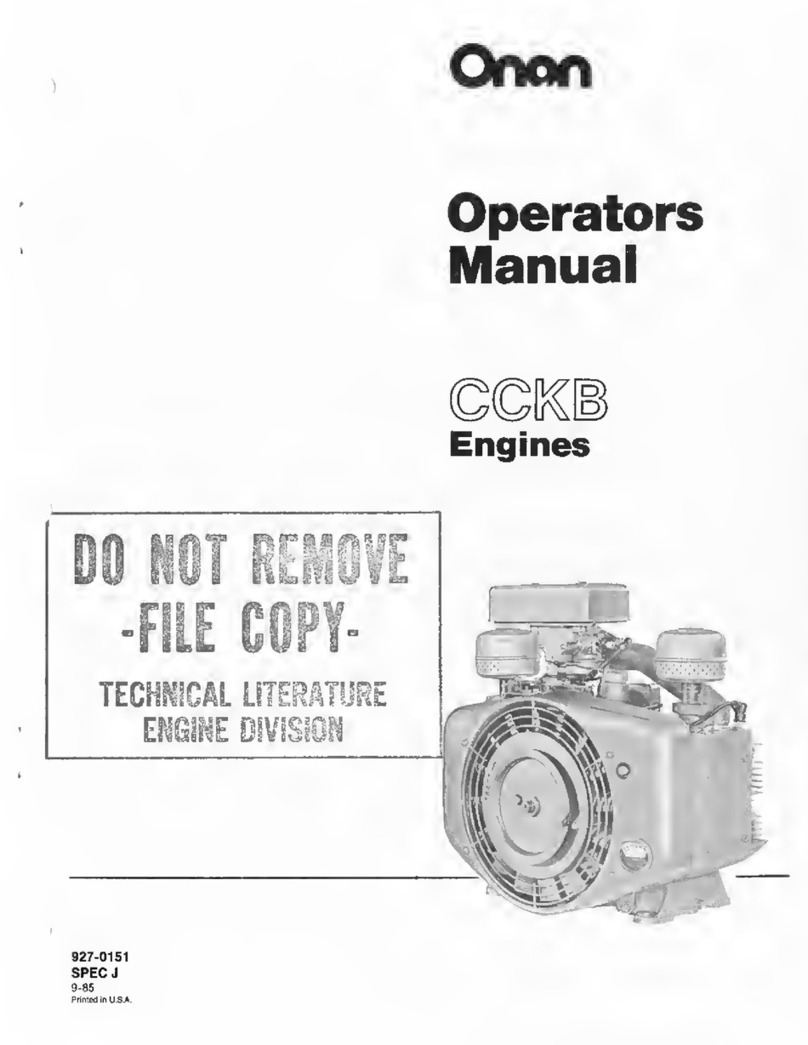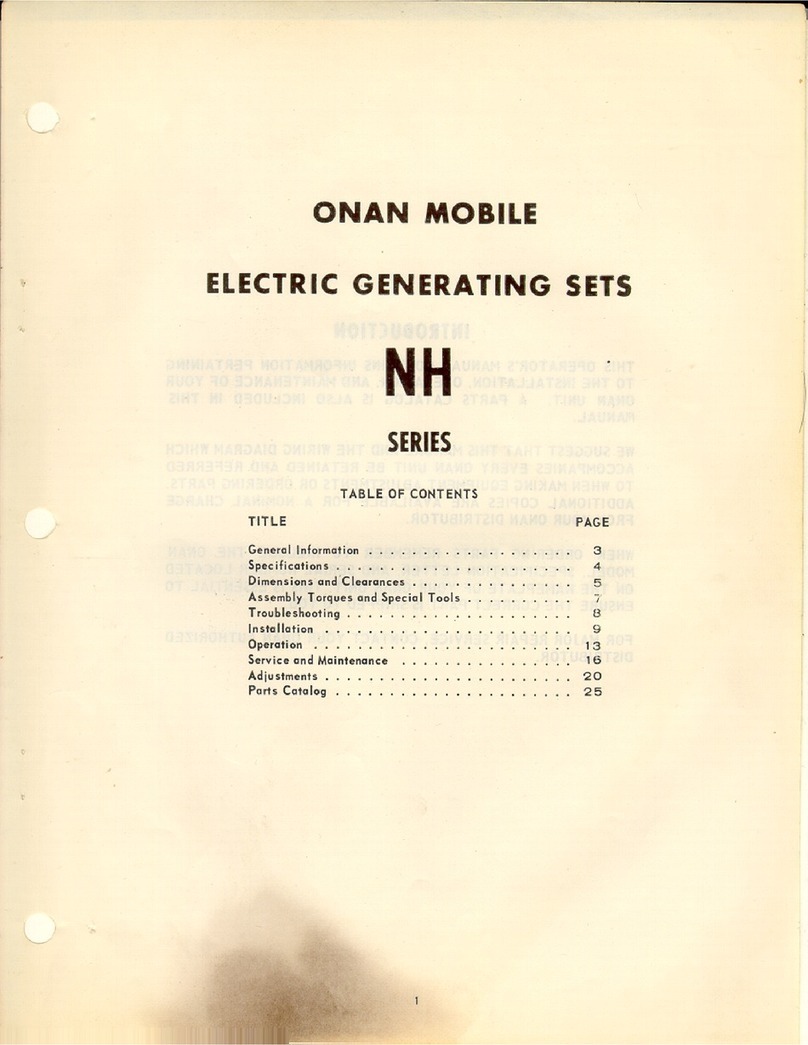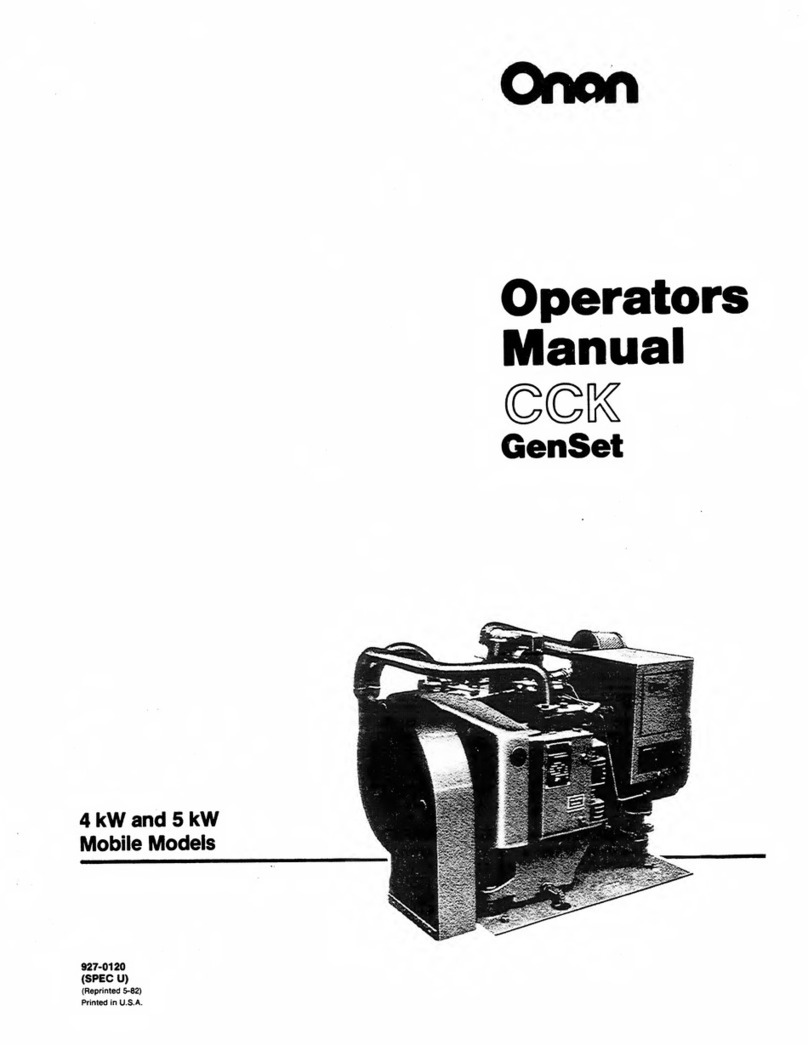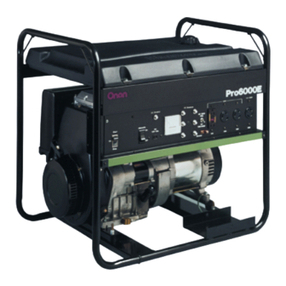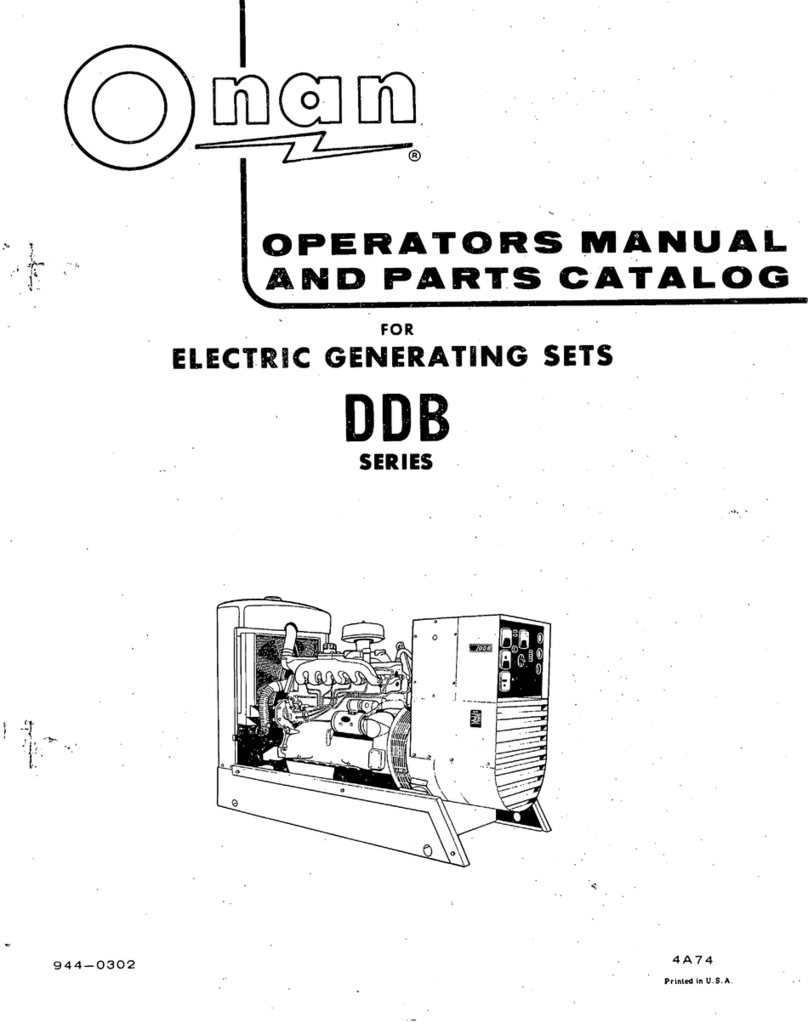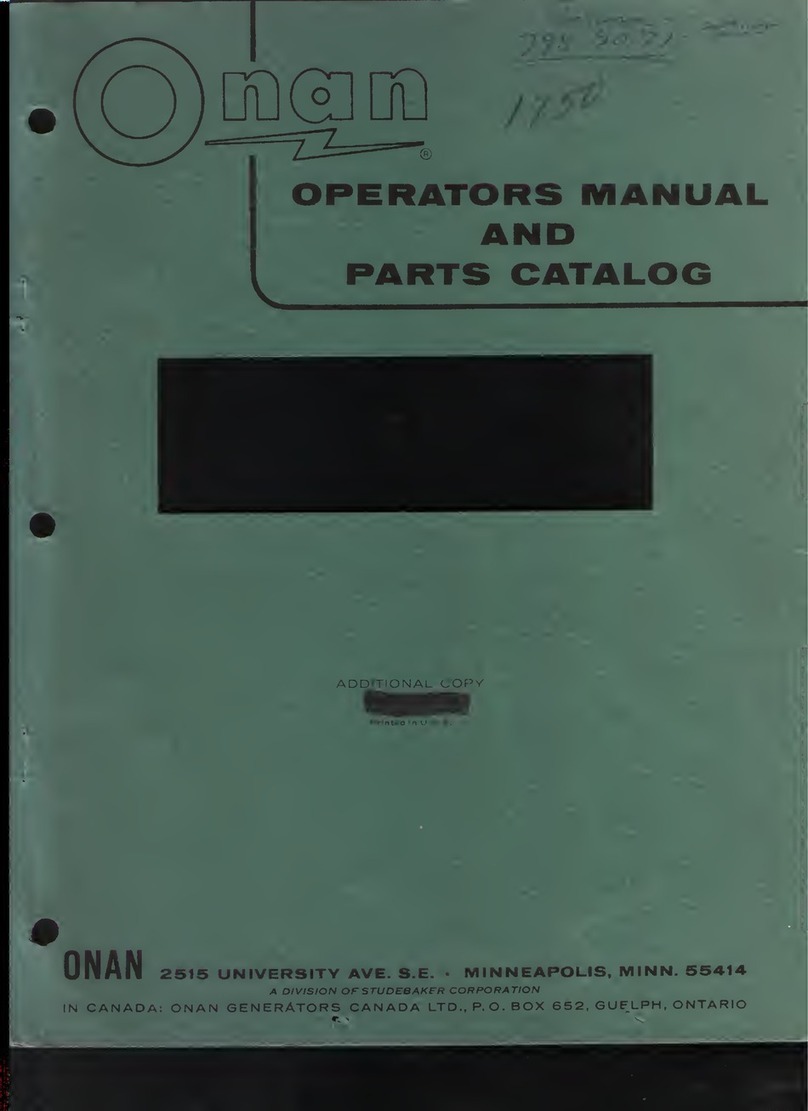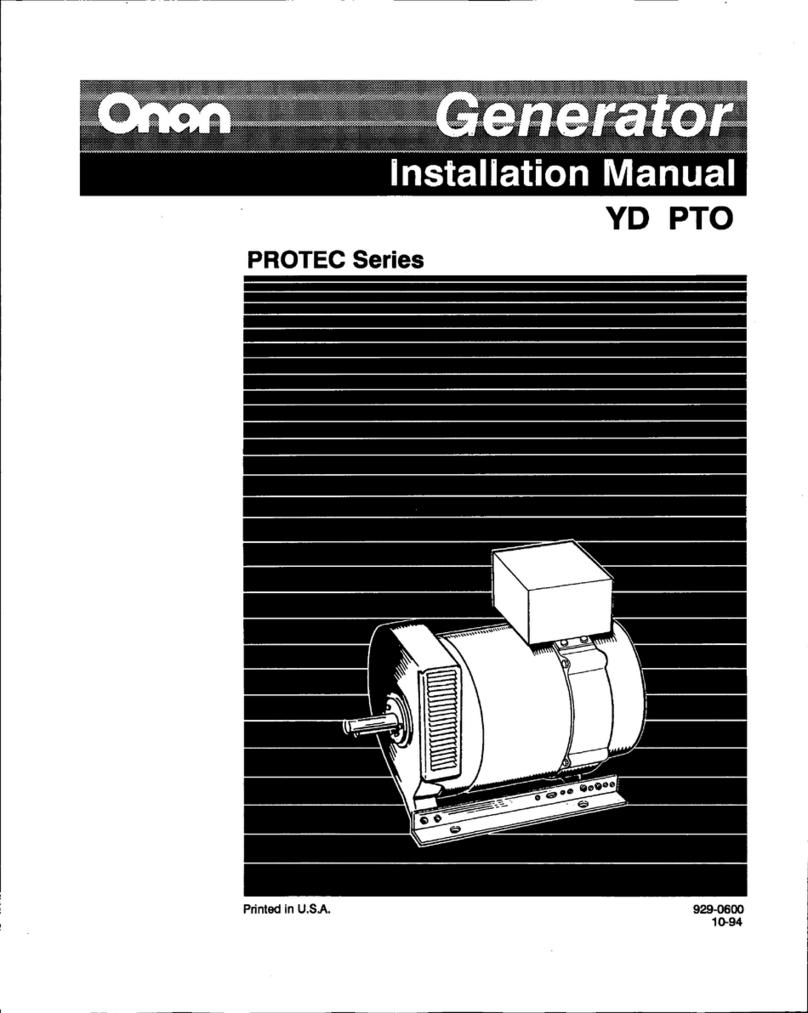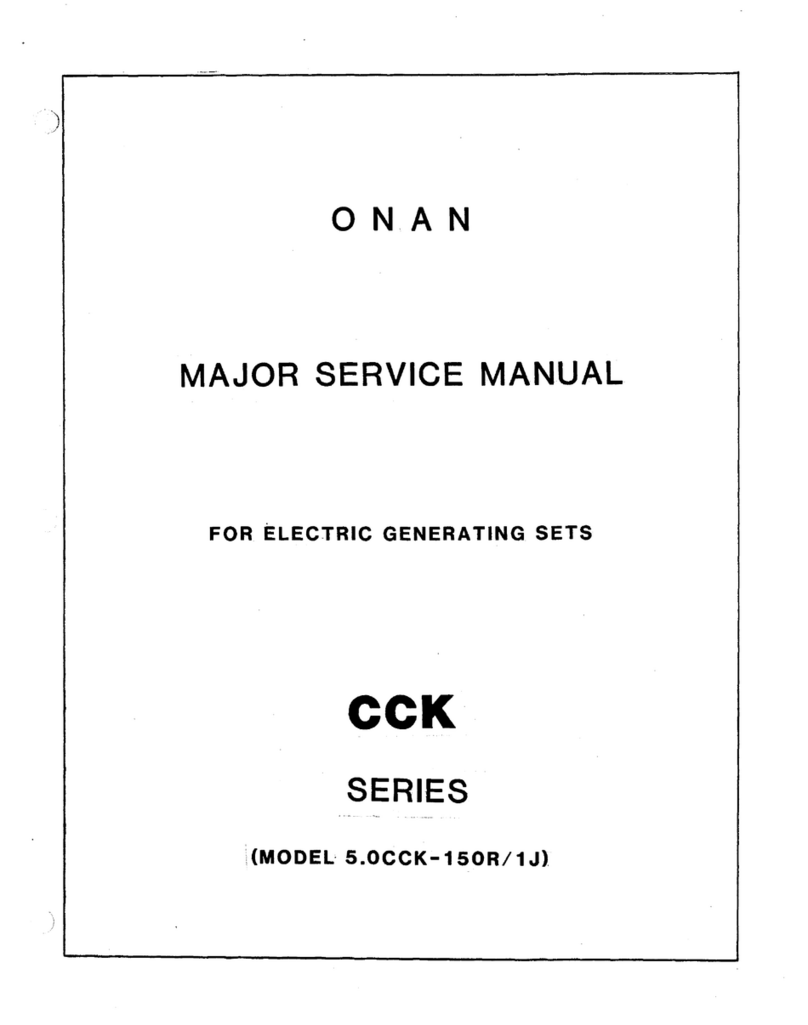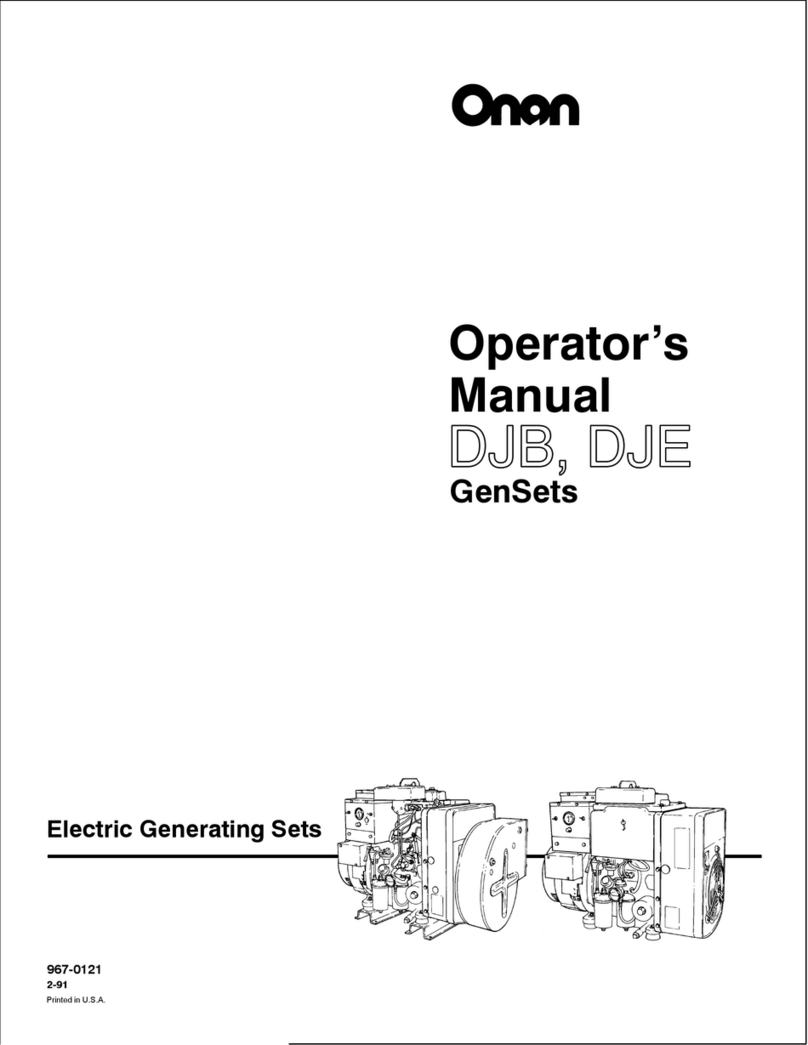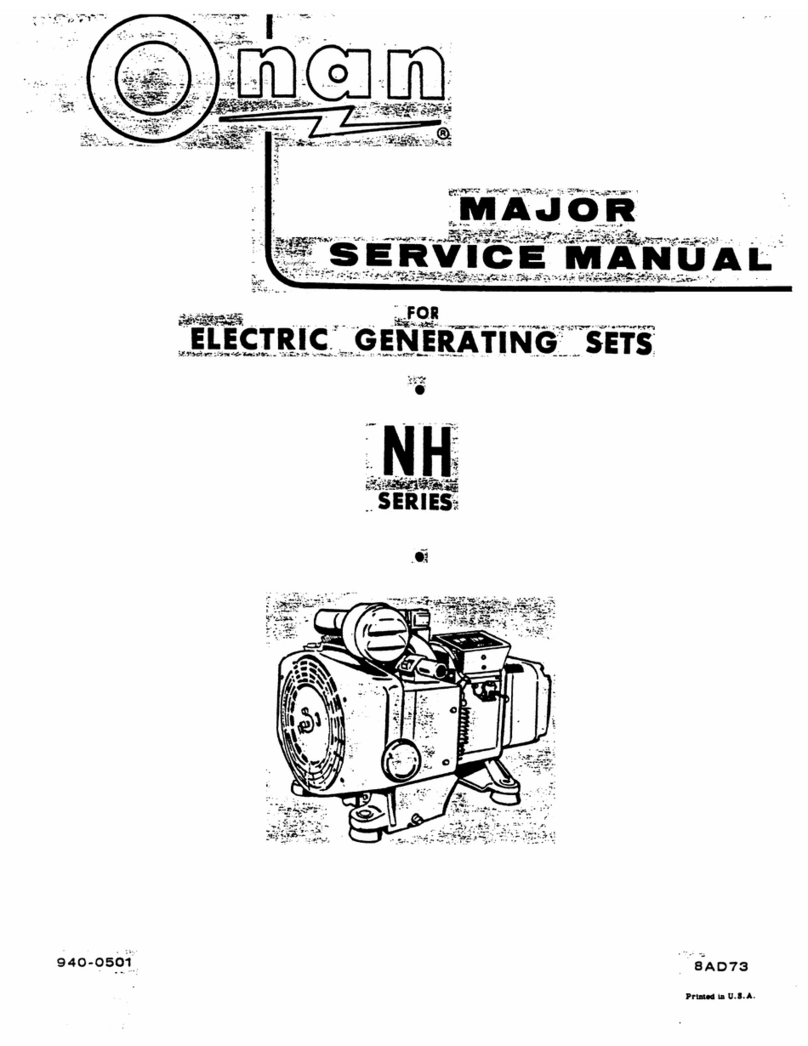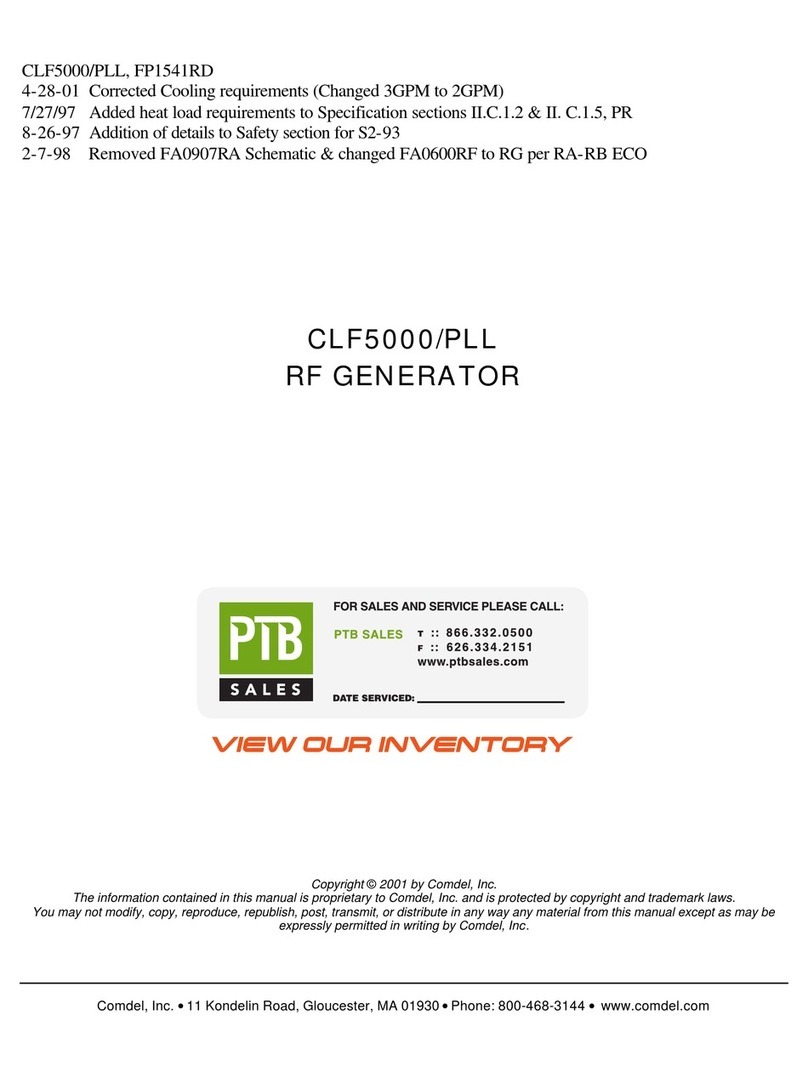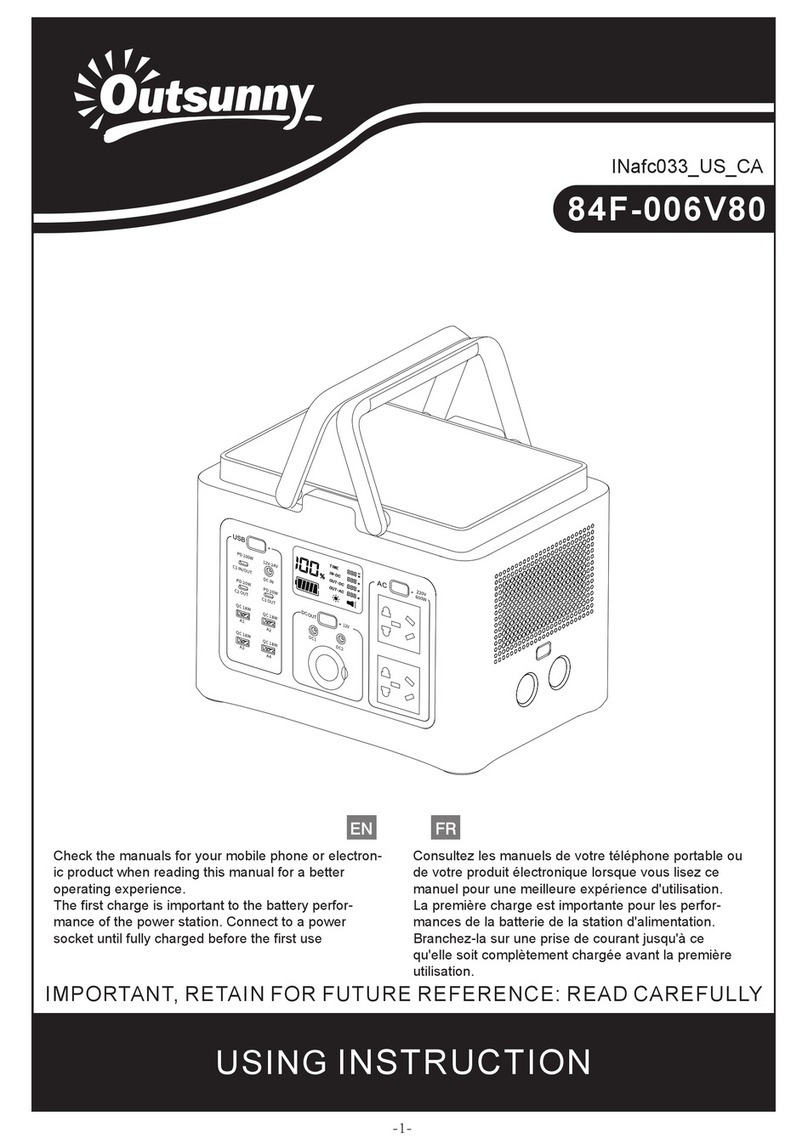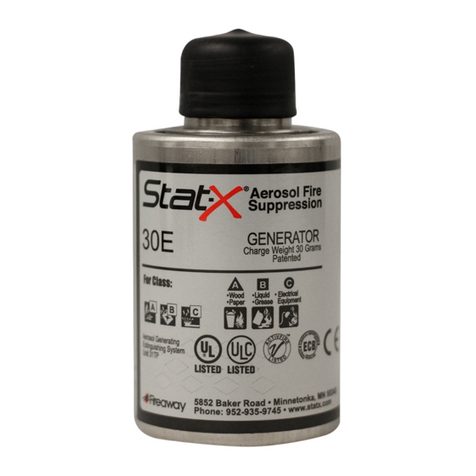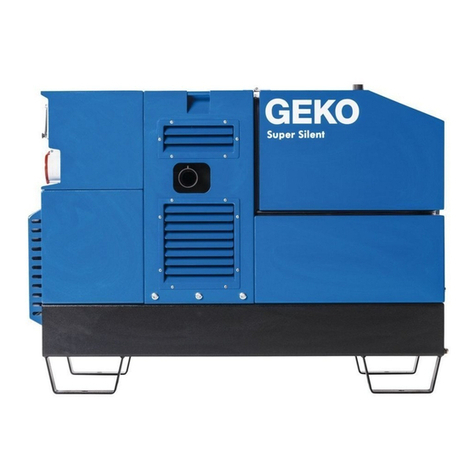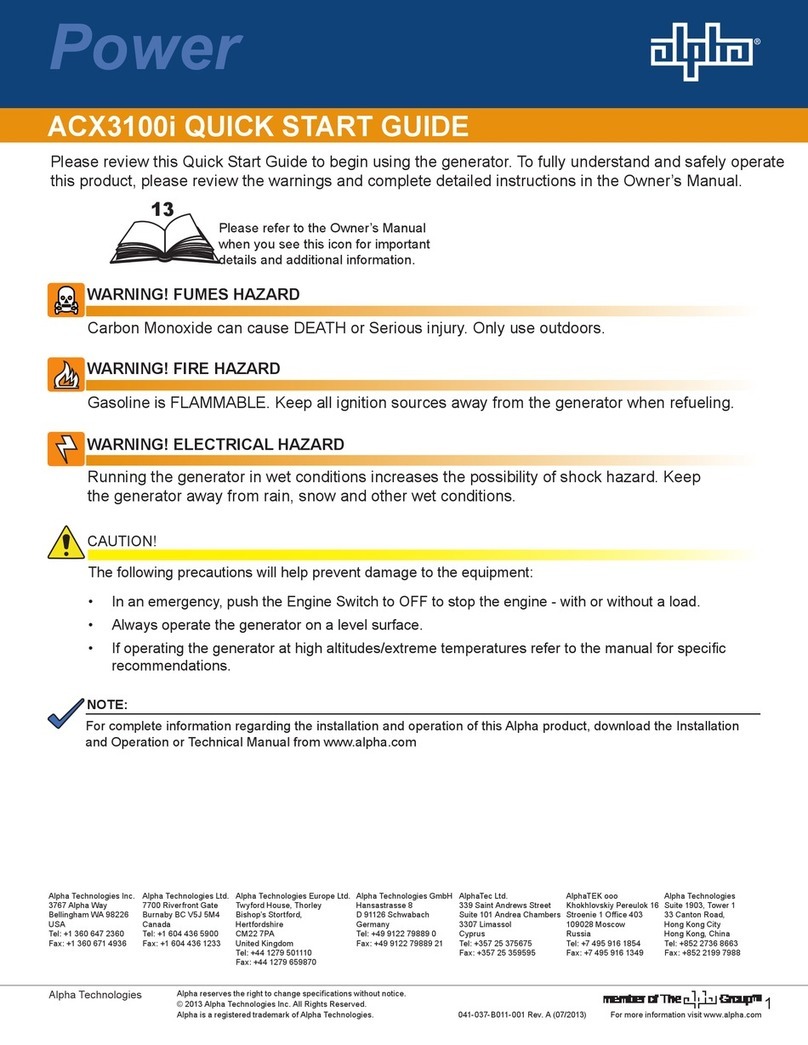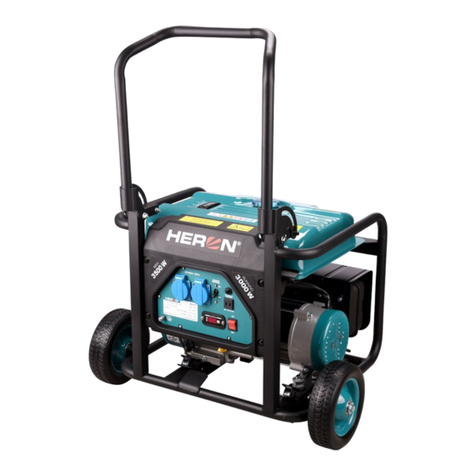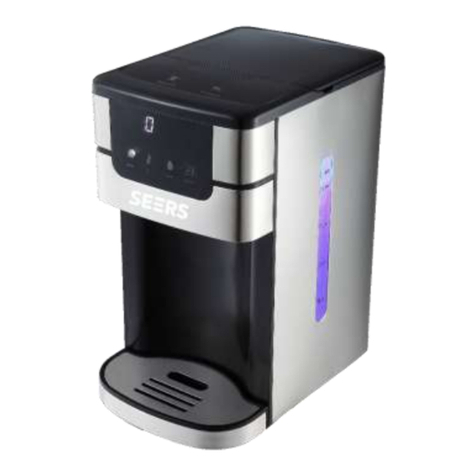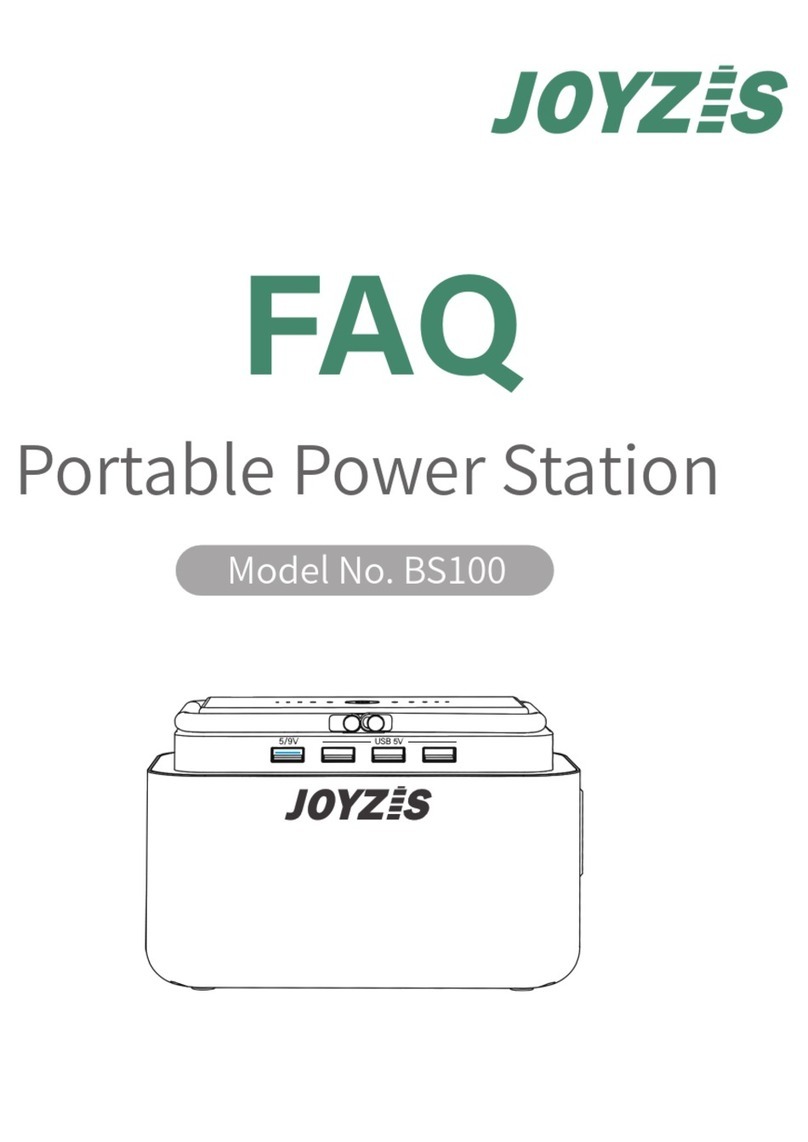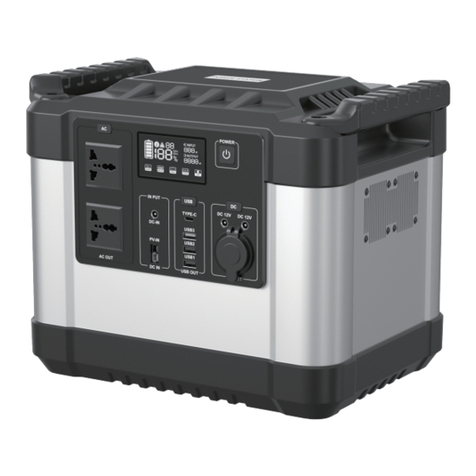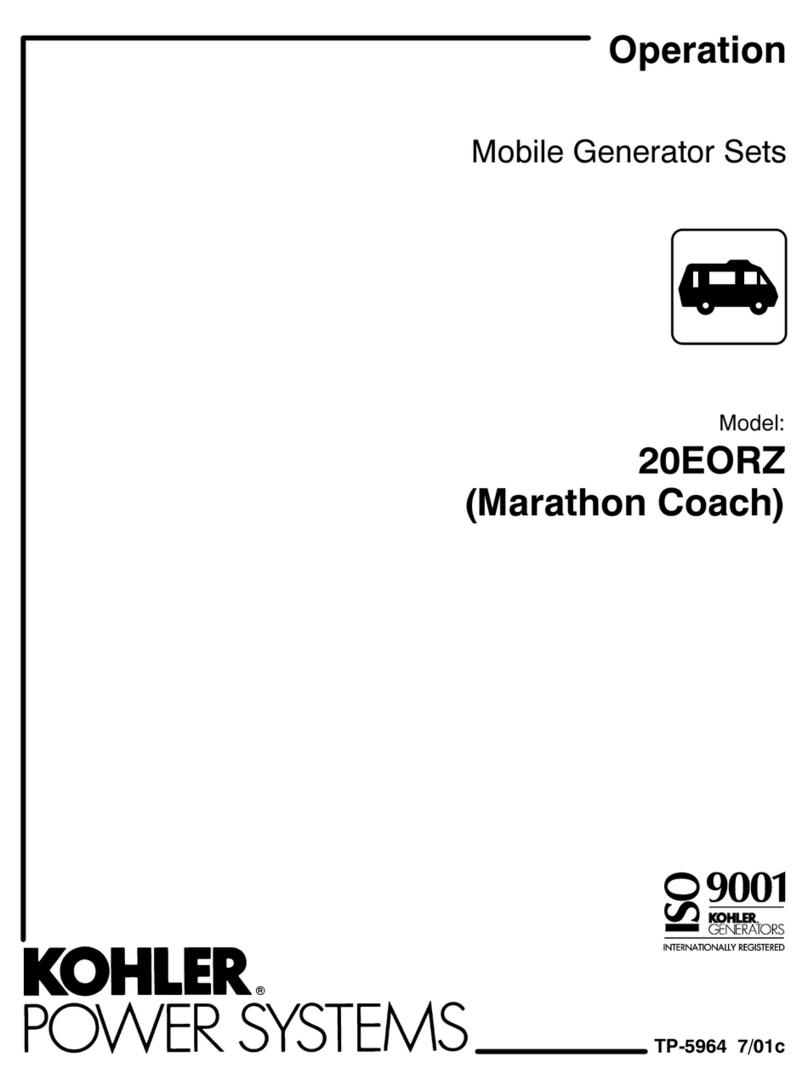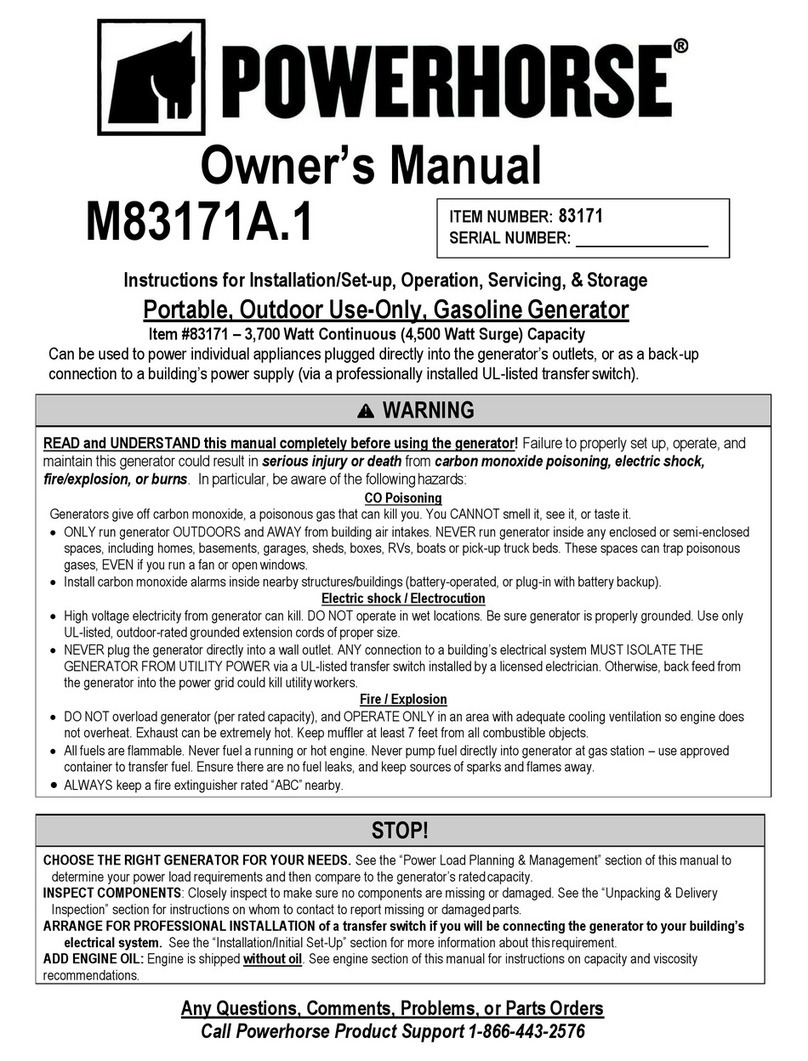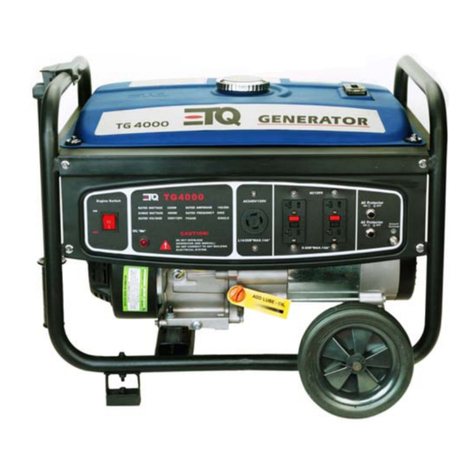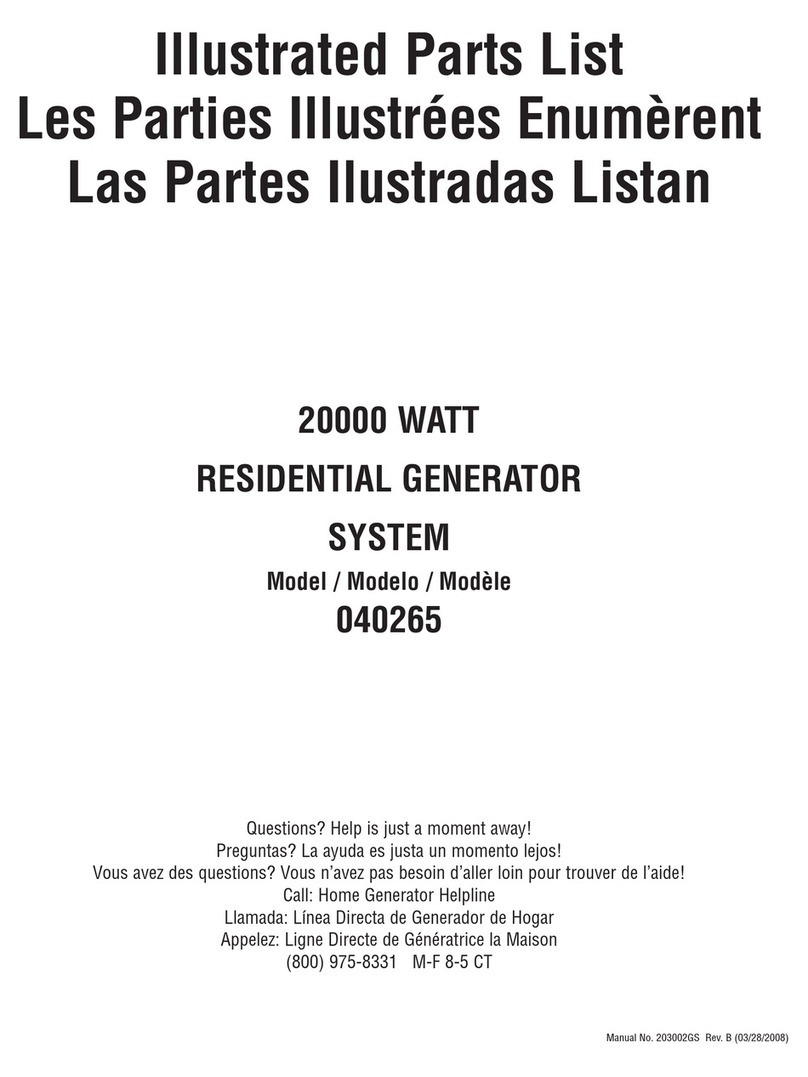
2
Safety Precautions
Thoroughly read the OPERATOR’S MANUAL
before operating the genset. Safe operation and
top performance can be obtained only when
equipment is operated and maintained properly.
The following symbols in this manual alert you to po-
tential hazards to the operator, service person and
equipment.
alerts you to an immediate hazard
which will result in severe personal injury or
death.
WARNING alerts you to a hazard or unsafe
practice which can result in severe personal
injury or death.
CAUTION alerts you to a hazard or unsafe
practice which can result in personal injury or
equipment damage.
Electricity, fuel, exhaust, moving parts and batteries
present hazards which can result in severe personal
injury or death.
GENERAL PRECAUTIONS
•Keep ABC fire extinguishers handy.
•Make sure all fasteners are secure and torqued
properly.
•Keep the genset and its compartment clean.
Excess oil and oily rags can catch fire. Dirt and
gear stowed in the compartment can restrict
cooling air.
•Before working on the genset, disconnect the
negative (–) battery cable at the battery to pre-
vent starting.
•Use caution when making adjustments while
the genset is running—hot, moving or electri-
cally live parts can cause severe personal inju-
ry or death.
•Used engine oil has been identified by some
state and federal agencies as causing cancer
or reproductive toxicity. Do not ingest, inhale, or
contact used oil or its vapors.
•Benzene and lead in some gasolines have
been identified by some state and federal
agencies as causing cancer or reproductive
toxicity. Do not to ingest, inhale or contact gaso-
line or its vapors.
•Do not work on the genset when mentally or
physically fatigued or after consuming alcohol
or drugs.
•Carefully follow all applicable local, state and
federal codes.
GENERATOR VOLTAGE IS DEADLY!
•Generator output connections must be made
by a qualified electrician in accordance with ap-
plicable codes.
•The genset must not be connected to the public
utility or any other source of electrical power.
Connection could lead to electrocution of utility
workers and damage to equipment. An ap-
proved switching device must be used to pre-
vent interconnections.
•Use caution when working on live electrical
equipment. Remove jewelry, make sure cloth-
ing and shoes are dry and stand on a dry wood-
en platform.
ENGINE EXHAUST IS DEADLY!
•Learn the symptoms of carbon monoxide poi-
soning in this manual and never sleep in the
vehicle while the genset is running unless the
vehicle is equipped with a working carbon mon-
oxide detector.
•The exhaust system must be installed in accor-
dance with the genset Installation Manual.
Engine cooling air must not be used for heating
the working or living space or compartment.
•Inspect for exhaust leaks at every startup and
after every eight hours of running.
•Make sure there is ample fresh air when operat-
ing the genset in a confined area.
FUEL IS FLAMMABLE AND EXPLOSIVE
•Do not smoke or turn electrical switches ON or
OFF where fuel fumes are present or in areas
sharing ventilation with fuel tanks or equip-
ment. Keep flame, sparks, pilot lights, arc-pro-
ducing equipment and switches and all other
sources of ignition well away.
Redistribution or publication of this document,
by any means, is strictly prohibited.
